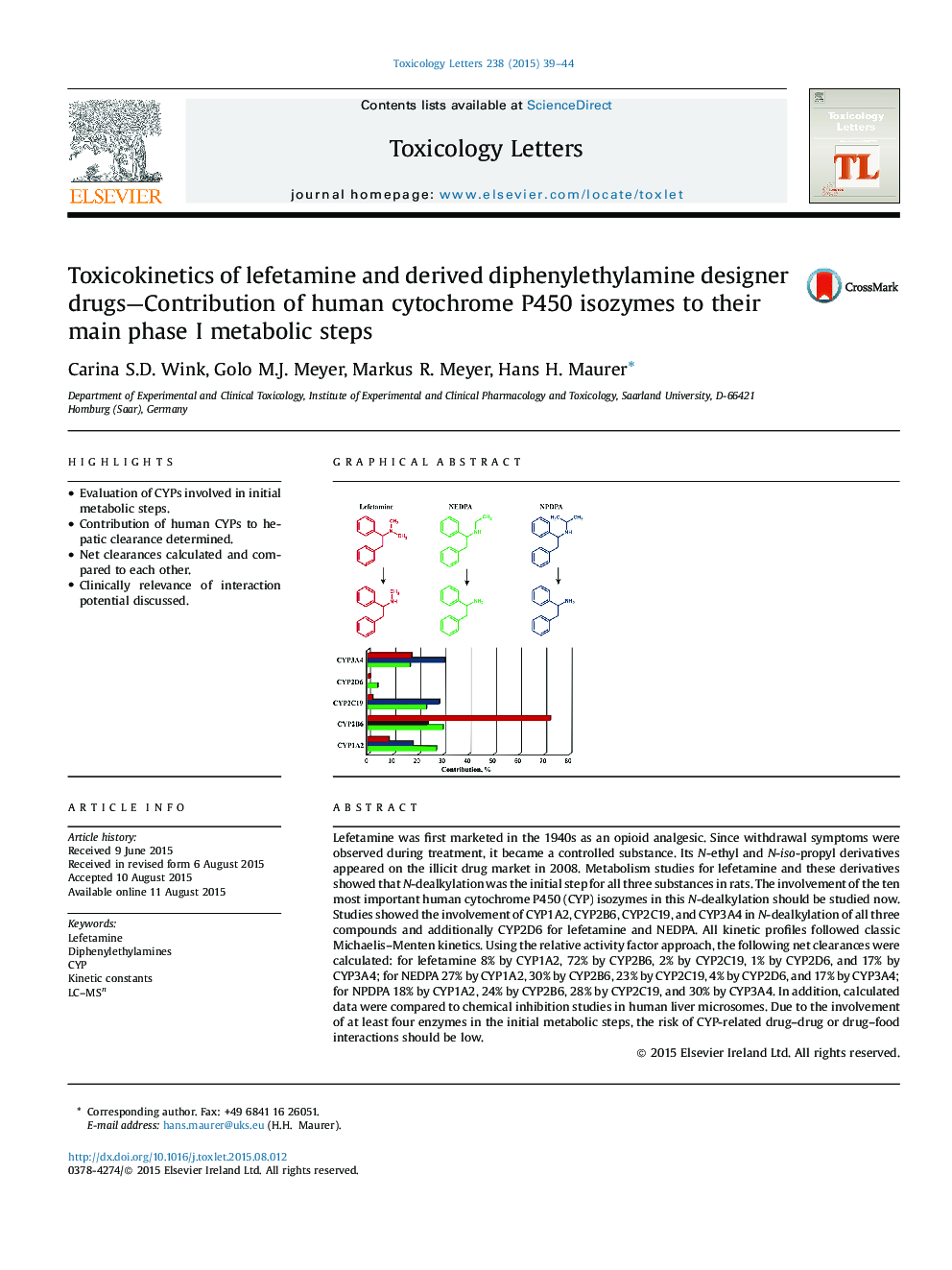| Article ID | Journal | Published Year | Pages | File Type |
|---|---|---|---|---|
| 2598576 | Toxicology Letters | 2015 | 6 Pages |
•Evaluation of CYPs involved in initial metabolic steps.•Contribution of human CYPs to hepatic clearance determined.•Net clearances calculated and compared to each other.•Clinically relevance of interaction potential discussed.
Lefetamine was first marketed in the 1940s as an opioid analgesic. Since withdrawal symptoms were observed during treatment, it became a controlled substance. Its N-ethyl and N-iso-propyl derivatives appeared on the illicit drug market in 2008. Metabolism studies for lefetamine and these derivatives showed that N-dealkylation was the initial step for all three substances in rats. The involvement of the ten most important human cytochrome P450 (CYP) isozymes in this N-dealkylation should be studied now. Studies showed the involvement of CYP1A2, CYP2B6, CYP2C19, and CYP3A4 in N-dealkylation of all three compounds and additionally CYP2D6 for lefetamine and NEDPA. All kinetic profiles followed classic Michaelis–Menten kinetics. Using the relative activity factor approach, the following net clearances were calculated: for lefetamine 8% by CYP1A2, 72% by CYP2B6, 2% by CYP2C19, 1% by CYP2D6, and 17% by CYP3A4; for NEDPA 27% by CYP1A2, 30% by CYP2B6, 23% by CYP2C19, 4% by CYP2D6, and 17% by CYP3A4; for NPDPA 18% by CYP1A2, 24% by CYP2B6, 28% by CYP2C19, and 30% by CYP3A4. In addition, calculated data were compared to chemical inhibition studies in human liver microsomes. Due to the involvement of at least four enzymes in the initial metabolic steps, the risk of CYP-related drug–drug or drug–food interactions should be low.
Graphical abstractFigure optionsDownload full-size imageDownload as PowerPoint slide
